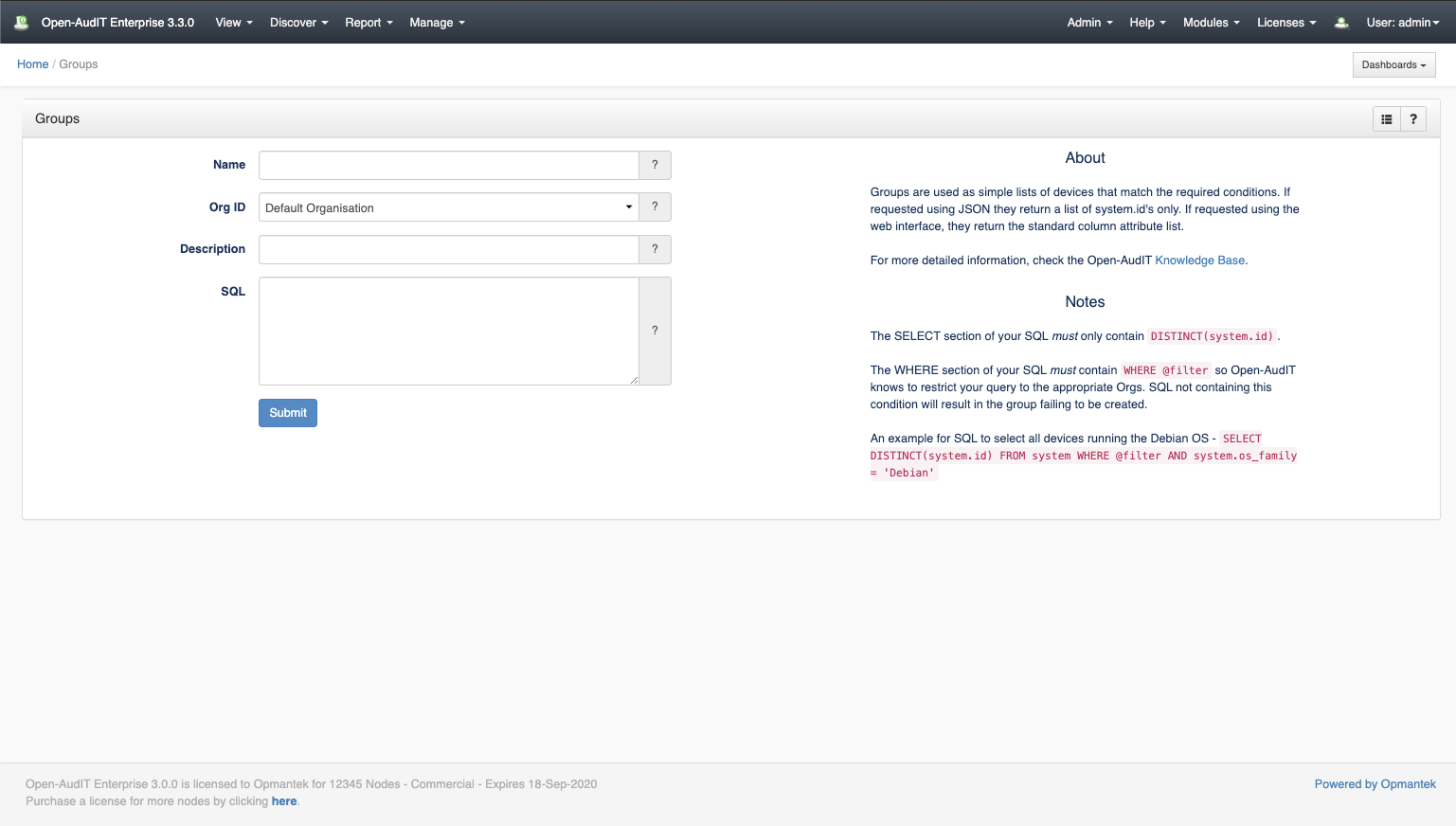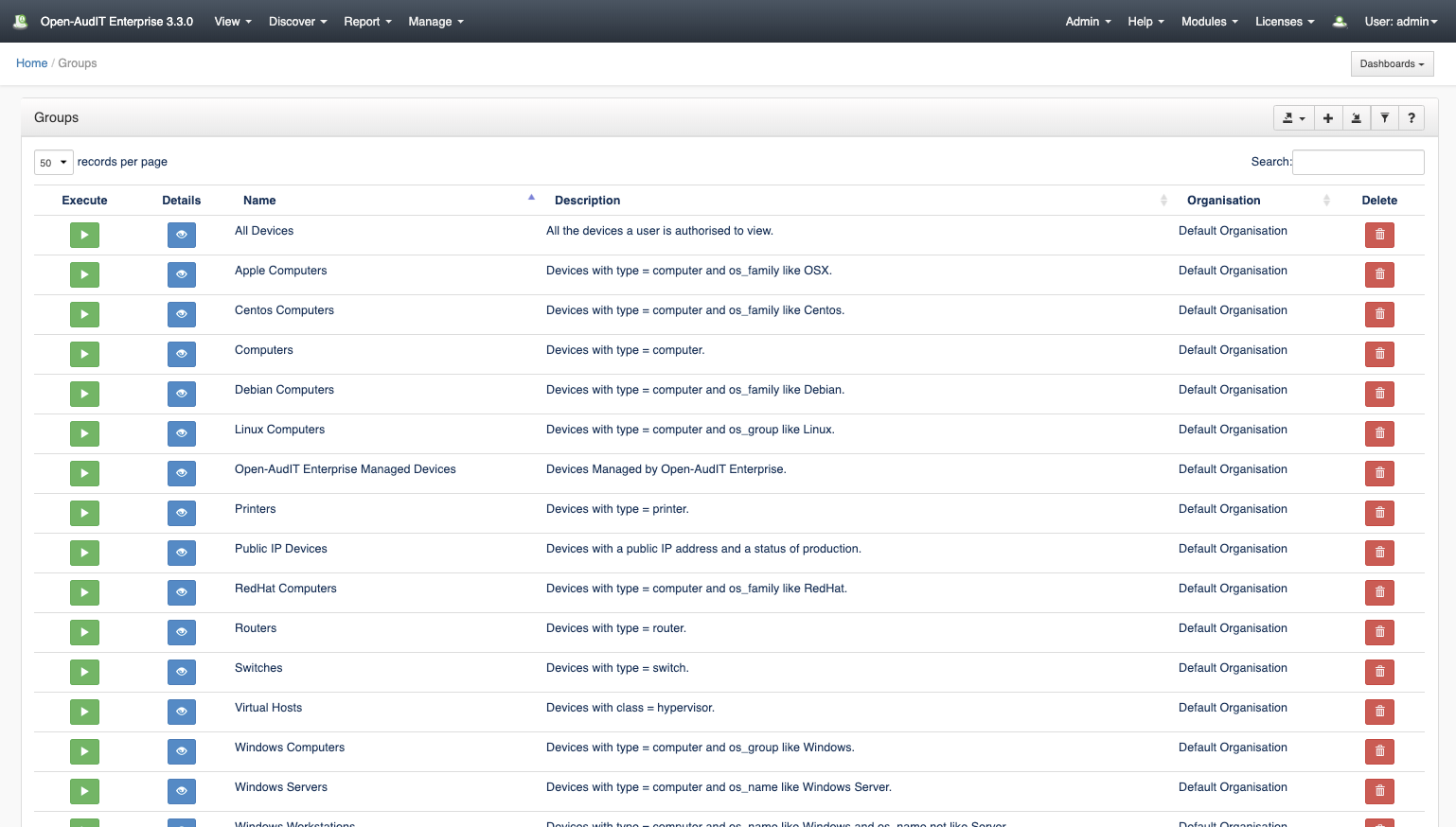...
A group can be created using the web interface if a user has a role that contains the group::create permission. Go to menu: Manage -> Groups -> Create Groups. There is also a create button on the collection page. A user must include the filter clause in the where filter, ie - WHERE @filter. This is required so Open-AudIT can return only those devices a user has access rights to. Examples are on the Help -> Default Group List Defaults -> Default Groups page (see below).
View Users Details
...
Default Groups
There are sixteen default groups. They are below. The default group definitions can also be found in the application at menu -> Help -> Defaults -> Groups. You will see a list of the default groups and the attributes used to create them.
...
| language | text |
|---|---|
| theme | Eclipse |
...
Database Schema
The database schema
...
can
...
be found in the application is the user has database::read permission by going to menu:
...
Admin -> Database -> List
...
Tables, then clicking on the
...
| Code Block | ||||
|---|---|---|---|---|
| ||||
CREATE TABLE `groups` (
`id` int(10) unsigned NOT NULL AUTO_INCREMENT,
`org_id` int(10) unsigned NOT NULL DEFAULT '1',
`name` varchar(100) NOT NULL DEFAULT '',
`description` text NOT NULL,
`sql` text NOT NULL,
`link` text NOT NULL,
`expose` enum('y','n') NOT NULL DEFAULT 'y',
`edited_by` varchar(200) NOT NULL DEFAULT '',
`edited_date` datetime NOT NULL DEFAULT '2000-01-01 00:00:00',
PRIMARY KEY (`id`)
) ENGINE=InnoDB DEFAULT CHARSET=utf8; |
Example Database Entry
...
| language | text |
|---|---|
| theme | Eclipse |
...
details button for the table.
API / Web Access
You can access the
...
collection using the normal Open-AudIT JSON based API. Just like any other collection. Please
...
see The Open-AudIT API documentation for further details.
API Routes
...
Web Application Routes
In addition to the above, when accessing Open-AudIT using a web browser.
...
Default Items
Shipped are a set of default items. These can be found by going to menu: Help → Defaults → Dashboards
...
.


